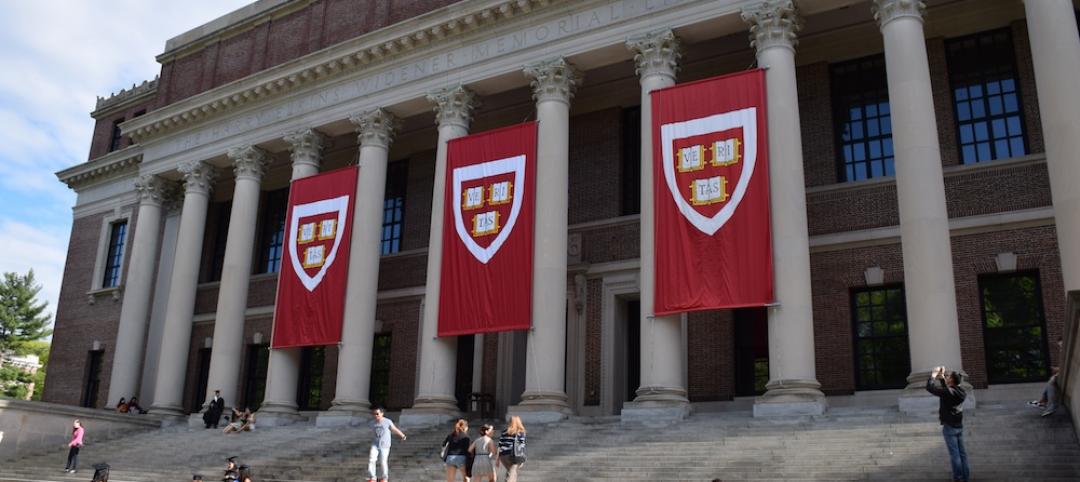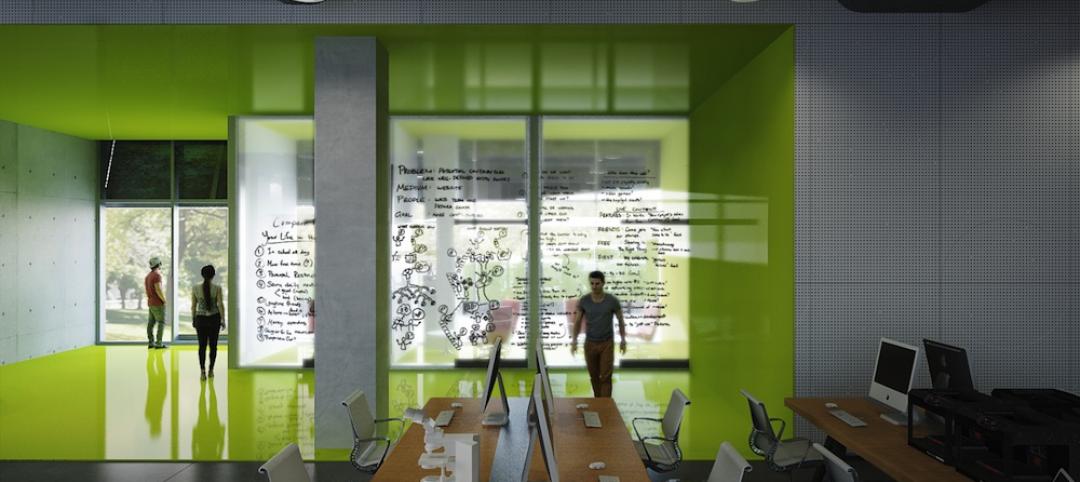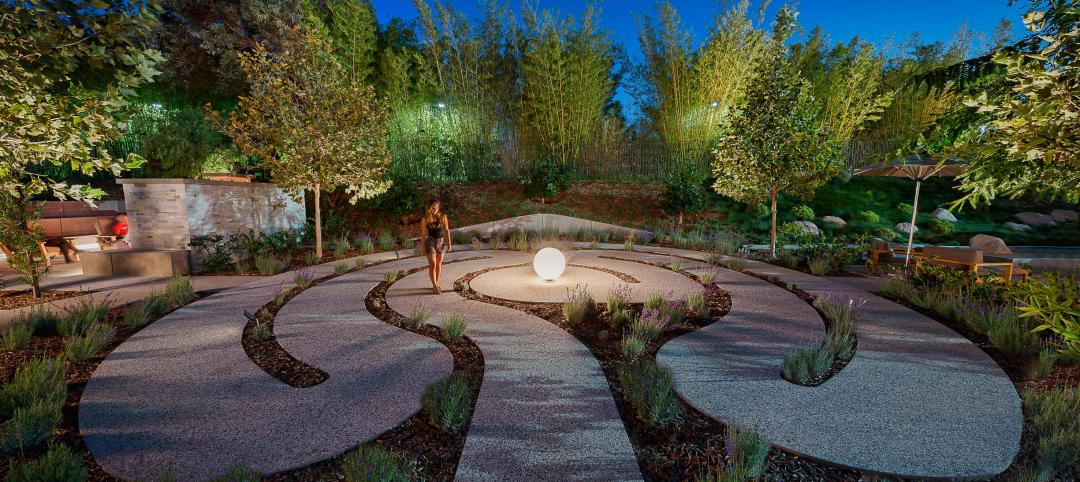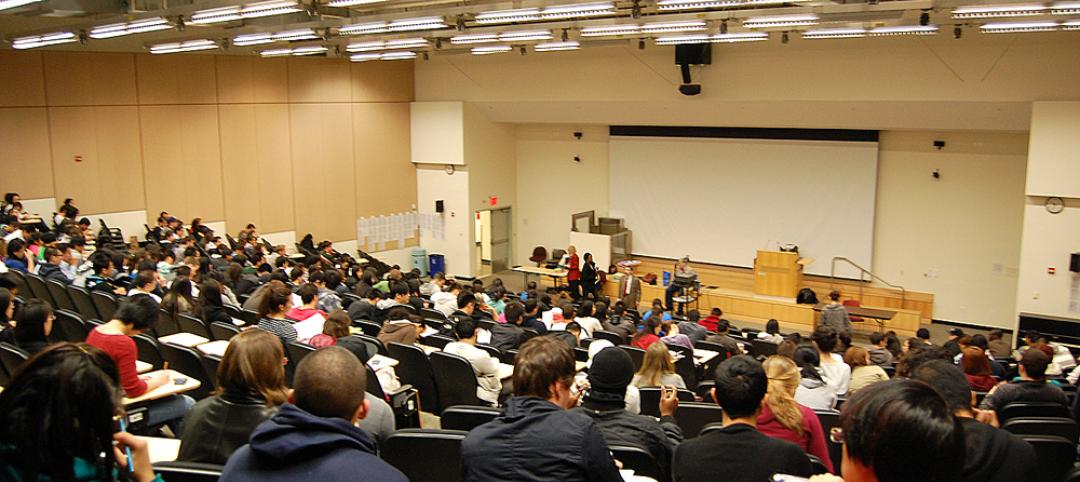In early March, the 80-seat Heights Restaurant & Bar opened on the 10th floor of the Smith Campus Center at Harvard University, in the heart of Harvard Square in Cambridge, Mass. This is the latest addition to a “common spaces” initiative that Harvard’s former President Drew Faust launched in 2008 to create a singular area on campus where thousands of faculty, students, staff, and visitors can congregate.
Harvard now boasts 385,000 sf of dedicated community space within the H-shaped Richard A. and Susan F. Smith Campus Center. The public can access the first floor and most of the second floor of the Center, which along with the 10th floor underwent a 36-month reconstruction and renovation that was completed last September, and entailed the excavation of 975 tons of demolition debris.
This project’s community and user outreach was extensive, with 25 focus groups and a survey that received 600 responses. The University also conducted a furniture showcase in the fall of 2016, around the same time that construction began.
 Harvard University's “One Harvard” concept creates a gathering place for students, faculty, staff, and the community. Image: Courtesy of Consigli Construction
Harvard University's “One Harvard” concept creates a gathering place for students, faculty, staff, and the community. Image: Courtesy of Consigli Construction
These efforts helped inform the redesigns by Hopkins Architects. (Bruner/Cott & Associates was the executive architect.) Consigli Construction executed the complete gutting of the 10th floor, and selective remodeling on the two lower floors that include the Moise Y. Safra Welcome Pavilion and Plaza, says Todd McCabe, Consigli’s Vice President-Project Services, who with John Lehane, the firm’s Project Manager, spoke with BD+C last week.
The renovation recreated the building’s Arcade (where most of the restaurants are) from a dungeon-like “two stories of concrete,” says Lehane, to a more inviting space with “more glass, new programming, and a large landscape area” with three or four green walls irrigated with UV-filtered rainwater. (Michael Van Valkenburgh Associates was the landscape architect.)
He says that one of this project’s biggest challenges was restoring the building’s façade and expanding the former Holyoke Center, which required the structural demolition of a two-story annex over a parking garage and then putting a three-story building in its place. The building’s “front door” is now highlighted by a two-story curtainwall. There’s also a three-story curtainwall on the Holyoke Street side of the building.

The remodeled building includes several green walls that are irrigated by UV-filtered rainwater. Image: Consigli Construction
Outside, new plazas open onto two thoroughfares.
Lehane notes that “what often gets overlooked” in projects like these is the MEP system. Working with engineer Arup, Consigli dedicated a MEP manager to “trace out” the system in order to keep it operable, as 500 people continued to work in the Center during the renovation, and thousands more walked through it every day. (The Center houses several of the university’s departments as well as Harvard University Health Services.)
All told, there were between 20 and 25 Building Team members on this project, says McCabe, including Consigli’s VDC team, which used virtual design tools for communications and planning, especially for occupied areas within the building.
Related Stories
University Buildings | Mar 1, 2016
The 5 most questionable college and university rankings of 2015
SmithGroupJJR's David Lantz identifies five of the most flawed higher education rating systems, including ones with arbitrary categories, and others that equate college with a transactional investment.
University Buildings | Feb 29, 2016
4 factors driving the student housing market
In the hyper-competitive higher education sector, colleges and universities view residence halls as extensions of their academic brands, both on and off campus.
University Buildings | Feb 17, 2016
New ideas to help universities attract and empower STEM students
Educational institutions are focusing on new learning strategies that engage students in activities, enable collaboration across STEM disciplines, and encourage students to use their hands just as much as their heads, as Stephen Blair of CannonDesign writes.
Multifamily Housing | Feb 1, 2016
Top 10 kitchen design trends for 2016
Charging stations, built-in coffeemakers, and pet stations—these are among the top kitchen design trends for the coming year, according to a new survey of kitchen and bath designers by the National Kitchen & Bath Association.
| Jan 14, 2016
How to succeed with EIFS: exterior insulation and finish systems
This AIA CES Discovery course discusses the six elements of an EIFS wall assembly; common EIFS failures and how to prevent them; and EIFS and sustainability.
Greenbuild Report | Dec 10, 2015
AASHE’s STARS tool highlights the university sector’s holistic approach to sustainability
Buzzwords like “living lab” and “experiential learning” are indicative of the trend toward more holistic sustainability programs that incorporate all facets of college life.
University Buildings | Nov 5, 2015
How active design is reshaping higher education campuses
Active design, a dynamic approach to design with a primary focus on people, assists students in learning to make healthy choices, writes LPA's Glenn Carels.
University Buildings | Nov 4, 2015
Yale completes Singapore campus
The Yale-NUS College has three residence halls and two administrative and academic buildings, with courtyards in the middle of them all.
University Buildings | Oct 16, 2015
5 ways architecture defines the university brand
People gravitate to brands for many reasons. Campus architecture and landscape are fundamental influences on the college brand, writes Perkins+Will's David Damon.
University Buildings | Oct 16, 2015
Competency-based learning: A glimpse into the future of higher education?
For better or worse, the higher education experience for many young Millennials and Gen Zers will not resemble the four-year, life-altering experience that we enjoyed—it’s just too costly.

















